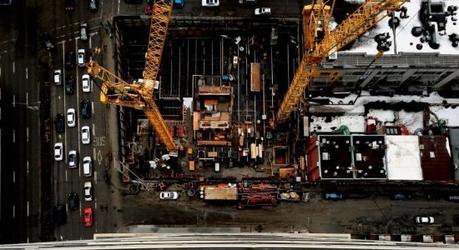
It requires time and effort to move large or heavy loads on the ground or across aisles, leading to severe injury. A gantry crane comes into effect in this situation, allowing factory owners to conveniently lower, raise, or pass goods horizontally across their agency’s overhead capacity.
These gantry cranes are operated by an operator, manually or by remote controls or a connected pendant device, and have high lifting capability for carrying out tasks.
What are the Pros and Cons of Using Overhead Cranes?
When it comes to operating a facility or a big industrial enterprise, you will not only have high-quality equipment, as well as the correct equipment to keep the operations on track.
You’ll be able to increase efficiency, move goods and items more efficiently around the factory, and reap a variety of other advantages with an aerial crane.
If you’re considering purchasing an aerial crane for the operation, evaluating the following features and advantages will help you make the best decision.
Cost-effective
Although attempting to meet the company’s heavy lifting demands, it does not have the same financial impact as permanent structures. Gantry cranes are a cost-effective and safe way to carry heavy materials.
They can be tailored to meet your specific needs and assist you with material processing that is both effective and productive.
They are often used in mechanical facilities, power stations, water treatment centers, metal fabrication factories, and various other locations. If you need mobility and versatility when carrying heavy loads, a gantry crane might be the best option.
Flexibility and mobility
The most powerful and portable lifting device is the gantry crane. They come in aluminum or steel, with interchangeable heights, struts, and distances, and can be used anywhere. They can be quickly transported to any workspace because it is not installed, and can begin raising in seconds until it is relocated.
If space is limited, a single-leg gantry crane along with a wall-mounted framework may be used. Furthermore, gantry cranes may have different wheel choices, allowing them to have the best wheels for various purposes.
Obstructions on the Floor Should Be Avoided
Since these cranes are as tall as the roof of your warehouse, they can miss almost everything on the factory floor. As a result, you’ll be able to put the machine about wherever you want. You’ll also be able to lift products above any barriers, minimizing product damage efficiently.

What are the different types of Overhead Cranes?
In your materials management operation, an overhead moving crane can contribute significantly. Cranes remove the need for people to move loads around the production line, which reduces workplace injuries. A crane aims to preserve resources by reducing the amount of human labor required. It also increases efficiency since a crane can move loads more quickly.
Both of these advantages can be realized by selecting the appropriate crane for your needs. There are a variety of options to choose from. Below are given the most commonly used types of overhead cranes along with their use. Have a quick look!
Bridge Crane
The most popular types on the marketplace are the overhead bridge cranes. They have two overhead bridge beams that have been connected to the facility’s support system. This is available in either single or double gantry configurations.
Monorails Cranes
A monorail crane is different from the others in that it lacks a girder. The lift is moved by a trolley attached to an I-beam on the crane. The load may travel in a horizontal path with a regular monorail crane. However, the tracks can be customized to fit the demand.
Ib Cranes
These do not have a hangar system; instead, it attaches to a wall and extends its bow over a coverage region. These can be freestanding, which means each structure has its support pillar.
Cranes for Workstations
A workstation crane is designed for use in areas where space is limited. It’s a straightforward build that can lift anything from 150 pounds to 2 tons. These are ideal for routine tasks such as carrying packaged containers. They’re built to be easy to use daily.
What industries use Overhead cranes?
Overhead cranes are widely used in almost all industries that deal with heavy equipment. The following are industries that rely on overhead cranes to get the job done:
Storage
Building a successful warehouse also necessitates quickly and securely moving and storing big and bulky crates. It’s not a choice to damage cargo or waste time looking for an object.
A well-ordered system of overhead cranes aids warehouse workers in keeping the stock sorted and usable, allowing boxes and barrels to be transported and stored without delay.
Automobile
Automobile assembly lines depend on transporting the goods from place to place to complete the process. This is where bridge cranes come into play. They may also be needed for auto repair jobs.
Power Plants
Power plants are full of operational machinery that must stay operational at all times; any downtime will result in a blackout. Whenever a reactor or generator in the operational plant requires maintenance, it should be carefully done away with. This service necessitates the use of a precise bridge crane device.
Shipbuilding
The hulls of ships are large and irregular in shape. Without having an overhead crane, shifting large equipment and pieces across inside a sloped hull may be difficult. Constructing ship hulls necessitates the use of a large-span heavy crane.
Wrapping Up
There are many benefits of using a gantry crane. There are slight drawbacks, as with any piece of machinery. That being said, in this situation, the advantages far outweigh the disadvantages.
You will be allowed to get one of those flexible cranes to make your company more effective and profitable if you deal directly with a crane provider to select an appropriate design for your project.
So when you are about to choose a new crane for your project, take all your needs into account before deciding to make the best decision.
